Once a nurse practitioner, Alicia Hauff now channels her nurturing spirit through another outlet—art, capturing the essence of nature and the human experience in it. In her studio, she brings to life stunning pieces that reflect her deep connection to the natural world. Each piece is a dialogue with nature, reflecting her passion for the environment she so lovingly portrays. Her journey challenges the norms, showing us how embracing our true passions can lead to unexpected yet fulfilling destinations.
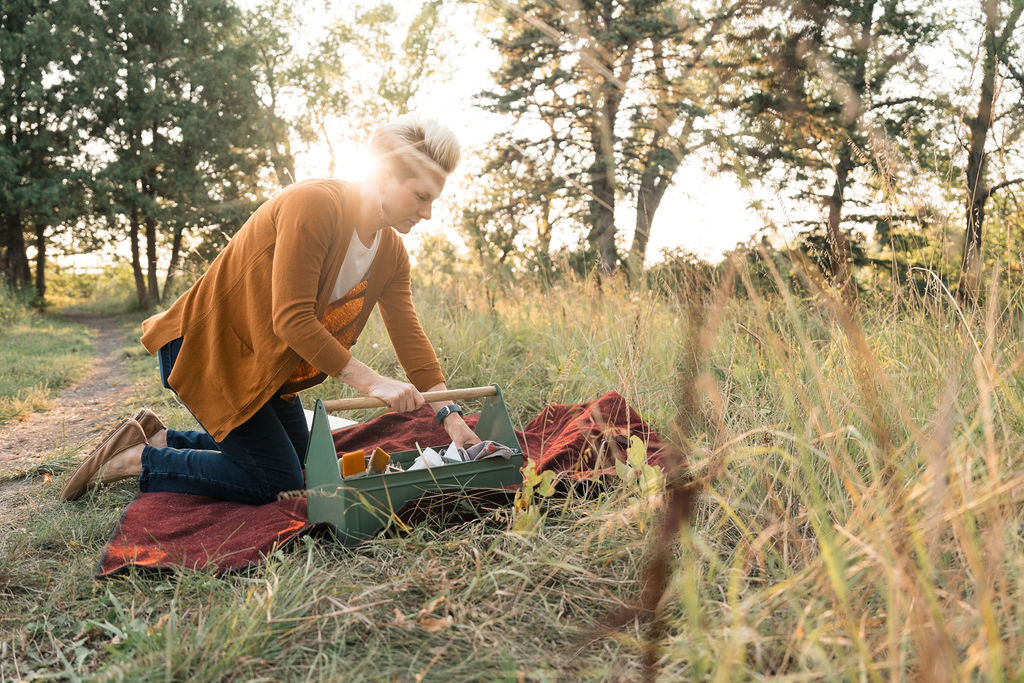
Before fully immersing herself in her art, Alicia dedicated eight years to serving as a nurse practitioner at the Homeless Health Services in downtown Fargo. In addition to that, she also was a part of the Cass County Jail medical outreach, an outreach program of Family HealthCare.
“I do miss it,” she said, “People ask if I miss it-I miss the people. I don’t miss the systemic barriers that I had to witness people dealing with every day. They couldn’t get meds covered, they couldn’t get food that day or a place to stay, they couldn’t get sober enough to reach some stability, or they couldn’t maintain housing. We would do all we could, every day, to help them where they were at that day because things were always in flux. It was very harm- reduction, trauma-informed care.”
With an already taxing work environment, the effects of the pandemic mic made everything that much more heavy for Alicia and her peers. She reached eight years in that role in the fall of 2021 and at the same time had found she was hitting her limit. “I was very angry every day, just angry at the whole system and the stuff that I couldn’t change,” she said.
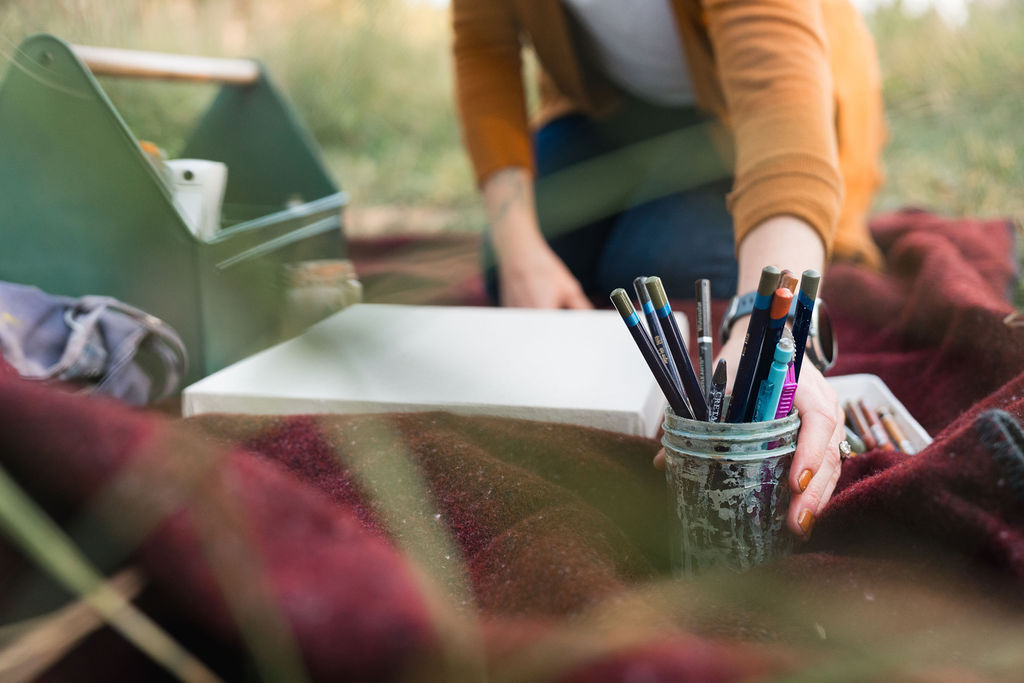
Already going to therapy for compassion fatigue, but still struggling with the lack of resources and effort from the industry for her and those in her position, she yearned for change. Despite the passion for her career and the fulfillment it brought, Alicia felt a tug towards a different path, one already ingrained in her. “Growing up, I’d always loved art, always made art,” she said. This underlying current of artistic desire, coupled with the intensive demands of her nursing career, led Alicia to a pivotal moment, but she admitted that it was really her husband Matthew, who first offered her an olive branch. “It was Matthew who said, ‘I can see you’re having a really tough time. Is it time for you to make the change to pursue your art career?’ And I said, ‘Is it okay that I do?’ It never occurred to me; I really thought I had to stick [my nursing career] out for some period of time—that I had to put in the time. That I had to be more financially stable to do this, and my kids needed to be out of the house—you get these timelines in your head, and they’re just in your head, it doesn’t mean that that’s the right thing for you,” Alicia said.
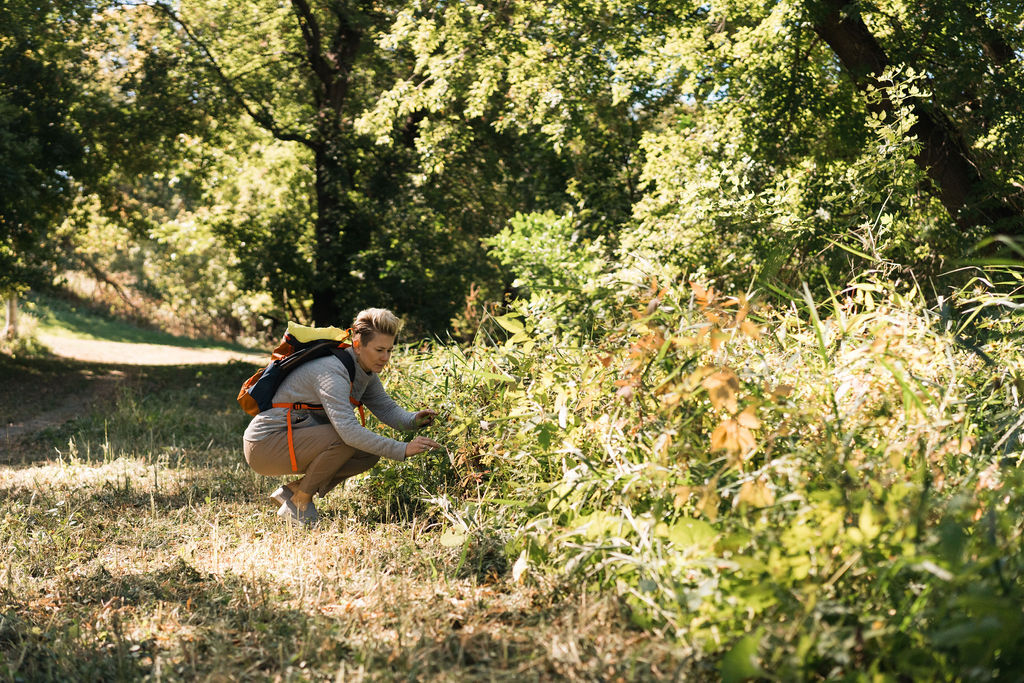
While she fully realized that the potential to switch careers was there, it came with a lot of shame and guilt for Alicia.
“I felt Iike I was quitting, that I was letting my team down, that I was letting my patients down, leaving them. I told people that I’ll still be here; I’ll just be showing up differently. So, that’s how I left things. And the more that I thought about all of that, the more I [realized] I needed to heal myself. I was so burned out.”
Alicia knew she needed time to heal and recalibrate. “I really rested, took it easy, and just focused on the kids, and family stuff for a few weeks,” she said. This period was crucial for her, a time to recover from the burnout and revisit her passion for art, which had been simmering beneath the surface for years. It was during this time of reflection and healing that Alicia’s path as an artist began to take form. With the support of her husband, she began to fully invest in the change. Setting up her studio, which Matthew built, became a symbol of this new chapter, a physical space where she could explore her creativity and develop her unique style.
Alicia began to find her artistic voice through a key project—creating an inspiration board. As part of an online educational course, Alicia sifted through a myriad of magazines to create a “vision board” for her artistry. Not quite realizing the scope in which nature influenced her work just yet, she noticed that she was drawn to pieces with outdoor themes. “You know what you’re drawn to. That’s the thread that you have to follow. That’s the spark,” she said. The board wasn’t just a collage of images; it was a reflection of her bond with the environment, leading to an epiphany.
“I looked at it and [thought], holy crap that’s awesome,” she said. That awe-moment was a pivotal moment in defining her artistic direction. Understanding that her work is driven by the natural world, Alicia realized what her fine artwork would be centered around when she stumbled upon a guidebook on native wildflowers of the prairies. “And that was when the light bulb went on; everything that was culminating came together,” Alicia said. This newfound inspiration led her to create her first series on raw stretch canvas, marking a departure from her earlier work. Until this point, her focus had been on layered, textured abstracts, which, while still a passion, did not fully capture the essence of what she now wanted to express.
The guidebook, featuring pictures and descriptions of wildflowers, along with folklore and their uses in medicines by First Nations peoples, resonated deeply with Alicia. It encouraged her to return to drawing, particularly focusing on botanicals. This series was not just an artistic endeavor but also an exploration of the natural world, intertwining her art with her growing interest in flora and its historical and cultural significance.

Simultaneously, Alicia recognized the need to understand the other side of pursuing an artist career full-time, the business side. She dedicated time to taking educational courses, beginning with an eight-week course on art business fundamentals. This was complemented by a 12-week online program which equipped her with knowledge of technical design principles and business management. Seeing her connection with nature, Alicia even extended her learning through self-study, becoming inspired by the book “Make Ink” by Jason Logan, which broadened her perspective on art production and material sourcing—another impactful decision that gave her work more direction.
This blend of practical education and personal introspection paved the way for Alicia to confidently pursue what she loves, but this simple equation didn’t, and doesn’t, mean finality—that’s the beauty of it.
Alicia has spent the years since she departed from healthcare discovering and honing her craft, and she continues to try new techniques and challenges to this day. Her most recent exploration calls back to the book, “Make Ink” by Jason Logan, and you can guess what she sought out to do—the creation of her inks to be used in her art, yet another call back to Alicia’s dedication to natural, sustainable art.
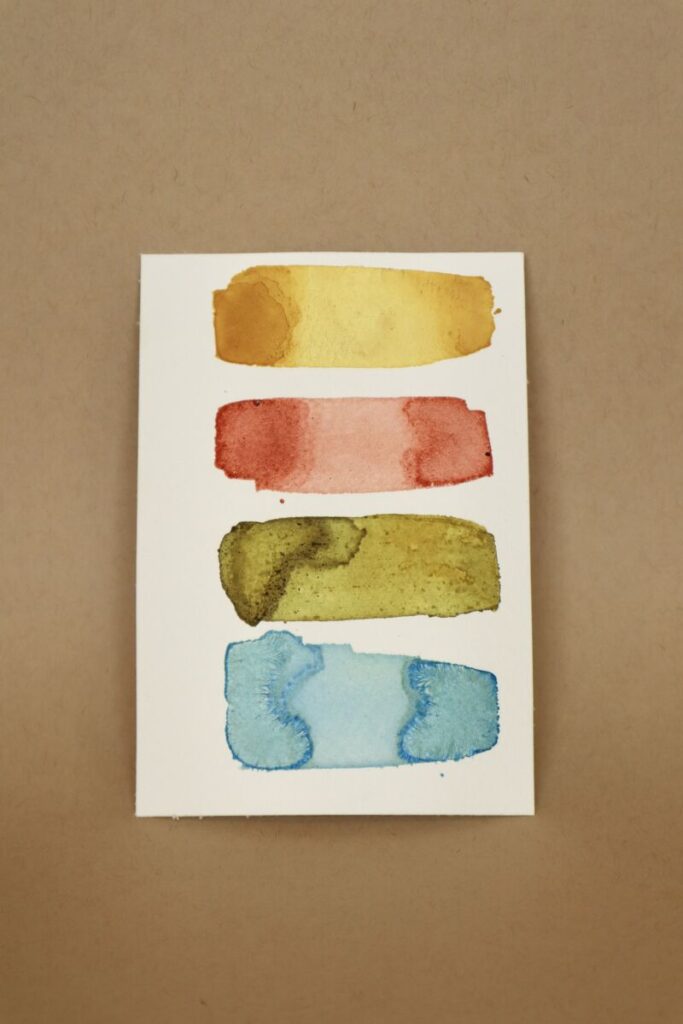
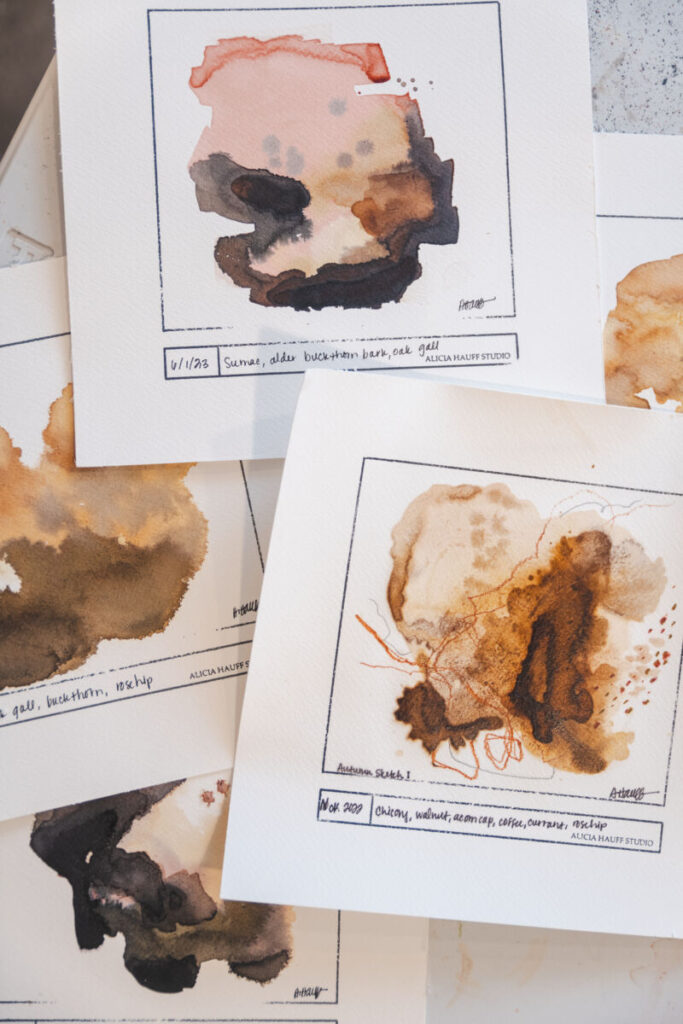
Creativity and connection to naturebleed into every corner of the process; from foraging for the natural materials to be used in the ink, to combining those materials to create different hues, to understanding how each ink will interact with both the paper and each other. Guided by “Make Ink,” but led by her own passion, Alicia has created and now sells a variety of Wild Ink Sets through her online shop. There is a level of complexity in making her inks, some require a chemical for color fastness, while others are a result of intricate natural processes, but above all, they require an educated dedication every step of the way.
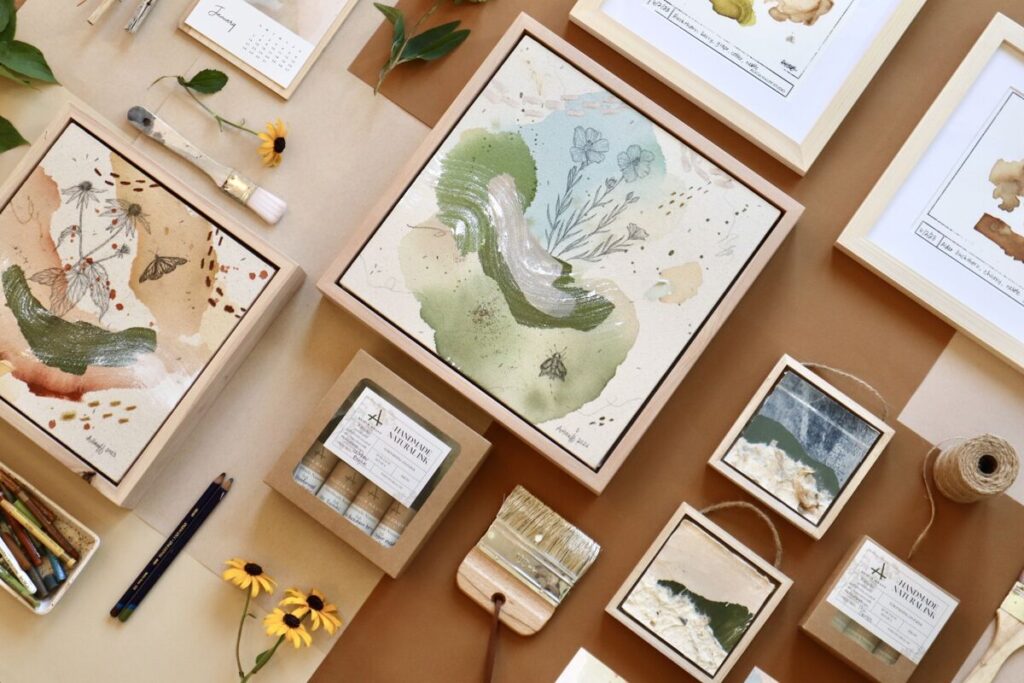
Working and experimenting with these handmade products requires Alicia to embrace the unpredictable nature of the materials, which has ultimately led to a philosophy of letting go and allowing the materials to dictate the outcome, reflecting the natural world’s inherent unpredictability and beauty, as well as another aspect of her relationship with nature being that she gives it a voice by allowing it to “speak” through her canvas. And finally, Alicia incorporates one more layer to her art that is ingrained in her own ethics. She goes beyond what others may consider “environmentally conscious” or “sustainable,” not only sourcing materials in that way but sourcing her creativity the same.
Q: Why do you think that land and a relationship with land is so important to you?
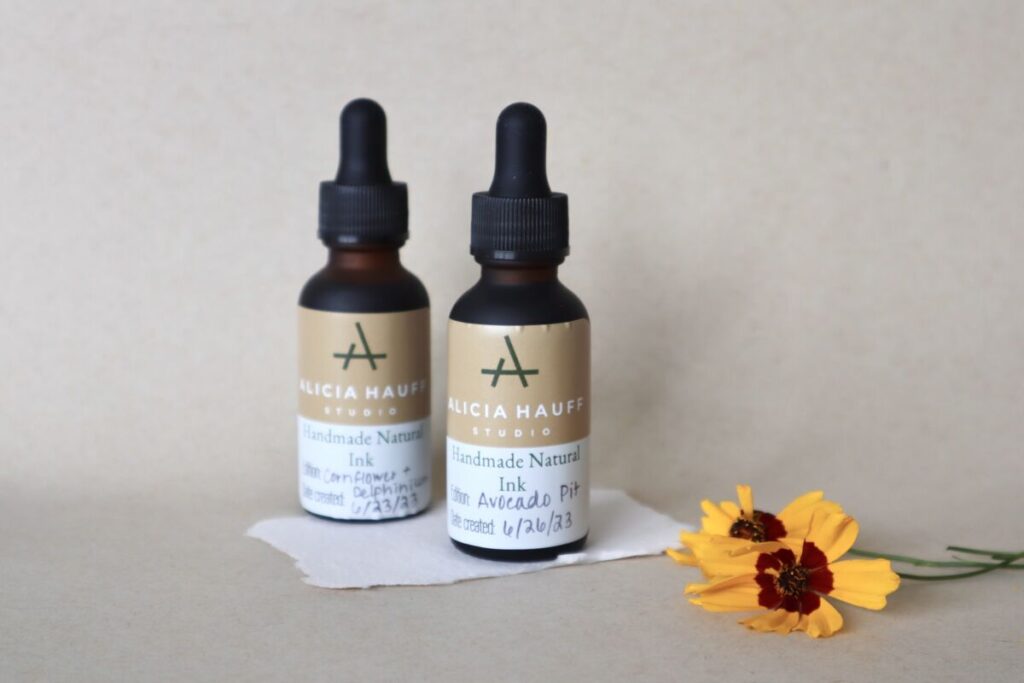
A: That’s a great question. And I really have thought about that, like where did this come from? I’ve always loved sciences in general, but the physical sciences—I used to be a rock hound. I love spending time outside, [it’s] necessary. I will go for a run in negative 20-degree weather, just to be outside. That, for sure, has something to do with it. Being outside has always been so nourishing. For instance, we had a huge mature cottonwood tree in our backyard growing up. Home life was a little tense, my parents ended up divorcing, so I didn’t want to be inside. Going outside was more secure for me. I was always in that tree. So, I realized some months ago, that that tree helped raise me. It was a tree elder right there, helping me. I consider that tree a member of my family, even back then, kind of—it’s almost like you see things in hindsight. I love to garden. I grow things from seed. I’ve done that for some years. Clearly, I love plants. So, the clues have always been there. I’ve always been drawn to those things. It’s just now, I’m starting to realize how all the things are coming together. The outdoors, the other hobbies—all those things were already there, so this just seemed like a natural fit.
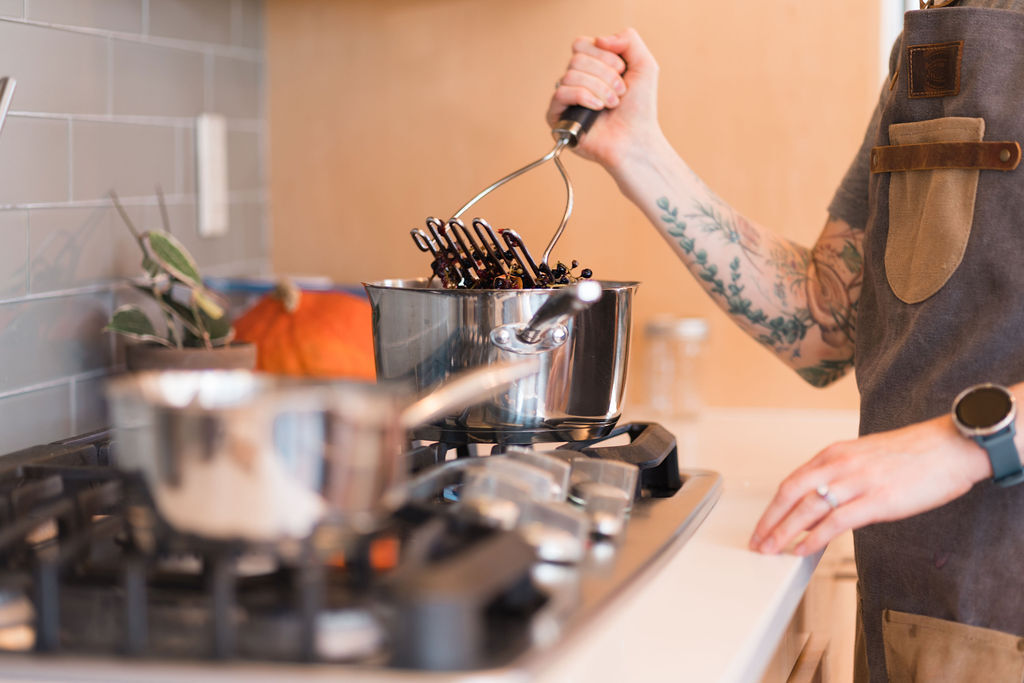
Q: How has your relationship with land and nature changed since you started this?
A: When I first started foraging last summer, I didn’t know what I was doing, I would yank things, root and all, thinking that I knew that I was okay to do that. [Now] it’s like, come prepared, bring a trimmer, you don’t need to yank the whole plan out, just trim off the part that you need so that it can grow back. I wasn’t as good or as conscious about asking for permission—I honestly was just overly excited, it was this new thing. This year, I’m so much more relaxed about it, and I’m much more conscious, like, ‘Do I really need to harvest that?’ and ‘I see all of this sumac or all of this buckthorn, do I really need it right now?’ No, I don’t, it’s gonna be there next year, so it’s almost a joy in not taking from the land now. It’s looking at it like, ‘Hey, how can we spend time together today?’
This year, I was painting and working outside with the land, and I honestly would read the cues a little bit. One day, a spot is a really good spot to work, and then, later, I’ll come back to that park and I’ll just get this vibe like, “No, not today, go to a different spot.” Maybe the grass grew where I was, there’s kind of an intuitive, vibe check or energy check with the land, and so then I’ll go to a different spot. Which Goldenrod plant wants to be drawn today? To actually let it guide me or [I’ll ask], “Hey, I need a place to sit down on this walk,” and then there’ll be a big tree stump or something. It’s developing that deeper relationship and consciousness with it. Honestly, learning how to communicate with it and being attentive and attuned. I’d say that’s been the biggest change— Letting me be taught, instead of just diving in there and taking what I want, the land is very forgiving.
I’m doing this because that care has always been there,” Alicia said. “It’s the way that I look at the world. I look at it through just the eyes of detail and color and how things relate to each other. It’s very relationshiporiented, and coming to realize a lot of these things in the last year, even less than a year, has just been eye-opening.”
In her fine artwork, Alicia utilizes her newly formed perspective on the earth and her surroundings to infuse each piece with a tangible piece of the environment. Her spiritual journey with herself and nature has deeply influenced her art, she gives a lot of credit to the book “Braiding Sweetgrass,” which blends indigenous wisdom, scientific knowledge, and the teachings of plants to explore themes of ecology, spirituality, and the interconnectedness of humans and the natural world.

Alicia’s nature-focused work was debuted in the form of a collection and she has since released her art collections seasonally. Those collections include fine artworks reflective of her relationship with the natural world, weaving together local flora, ethnobotany, and ecological consciousness. Her work always embodies a respectful relationship with the land, showcasing a commitment to community and an exploration of the interconnectedness of art and nature. Each collection is released with a personal note from the artist, expanding on the theme of the works, and offering additional value to the collection as a whole.
See Alicia’s summer on the prairie and spring on the prairie collections and read more about then here!
This spring, Alicia will be working on a new focus-birds of the prairie! That collection will be released in March or April, accompanied by an artist reception. You can follow her on Instagram at @aliciahauffstudio or sign up for her newsletter on her website for updates!
Each element of Alicia’s work—from the sustainable sourcing and creation of materials to her fine art—is a blend of her deep respect for nature and her commitment to environmentally conscious art practice every step of the way. Alicia’s transition to this new style was more than a change in technique; it represented a deeper connection with her surroundings and a commitment to bring the beauty of nature into her art. A true artist’s evolution, where personal growth and a connection become the primary drivers of creative expression.
Support Alicia and learn more about her work at aliciahauffstudio.com.



